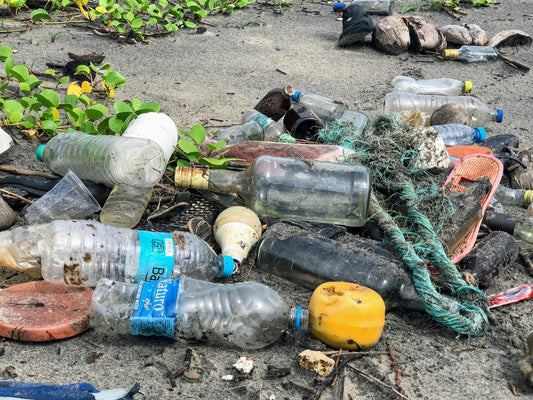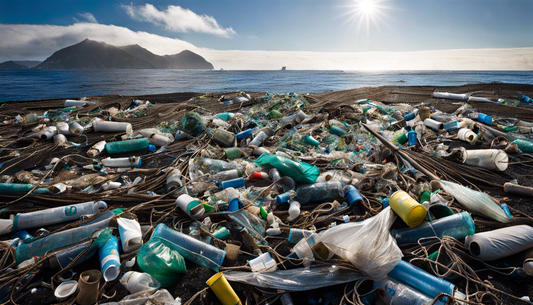Share
Brilliant Breakthrough: A Mercury-free fusion fuel production:
Scientists have hit an exciting breakthrough in nuclear fusion - a method to produce lithium-6 effectively without the frowned-upon use of toxic liquid mercury. Previously, lithium-6's extraction from its more common sibling, lithium-7, required the incredibly toxic liquid mercury, a process known as the COLEX process. This was banned in 1963 in the US due to pollution problems, leading US researchers to depend on the dwindling stockpile at Oak Ridge National Laboratory in Tennessee. This new mercury-free method could hence be the key to unlock a new age of nuclear fusion, a sustainable energy source.
Stumbling onto a Sustainable Solution:
While working on membranes for cleaning produced water from oil and gas drilling, the researchers discovered a possible lead toward lithium-6 isolation. They noticed that their membrane, made of zeta-vanadium oxide (ζ-V2O5), captured significant amounts of lithium salt in the water. Apparently, the lithium-binding properties of zeta-vanadium oxide were due to its tunnel-like molecular structure. Furthermore, the material could selectively trap lithium-6 over lithium-7 in its tunnels, leading the researchers to develop the new method.
Lithium-6 isolation Goes Green:
The researchers conducted a test using an electrochemical cell with zeta-V2O5 as the cathode. As the lithium ions in the solution were attracted to the negatively charged zeta-V2O5 matrix, lithium-6 and lithium-7 navigated the cell differently due to their different weights. This resulted in the lithium-6 ions sticking to the tunnels in zeta-V2O5 much more strongly than the lithium-7 ions. To make it even better, the reaction was easily observable by color change, from a bright yellow to dark olive green.
The Way Forward:
According to researchers, this new method is as effective as the previously used COLEX process. The next step is to scale up the method to an industrial level, and while that comes with its engineering challenges, the team is confident about forming a practical approach to propel nuclear fusion energy. This clean energy dream might be closer than ever!
Scientists have hit an exciting breakthrough in nuclear fusion - a method to produce lithium-6 effectively without the frowned-upon use of toxic liquid mercury. Previously, lithium-6's extraction from its more common sibling, lithium-7, required the incredibly toxic liquid mercury, a process known as the COLEX process. This was banned in 1963 in the US due to pollution problems, leading US researchers to depend on the dwindling stockpile at Oak Ridge National Laboratory in Tennessee. This new mercury-free method could hence be the key to unlock a new age of nuclear fusion, a sustainable energy source.
Stumbling onto a Sustainable Solution:
While working on membranes for cleaning produced water from oil and gas drilling, the researchers discovered a possible lead toward lithium-6 isolation. They noticed that their membrane, made of zeta-vanadium oxide (ζ-V2O5), captured significant amounts of lithium salt in the water. Apparently, the lithium-binding properties of zeta-vanadium oxide were due to its tunnel-like molecular structure. Furthermore, the material could selectively trap lithium-6 over lithium-7 in its tunnels, leading the researchers to develop the new method.
Lithium-6 isolation Goes Green:
The researchers conducted a test using an electrochemical cell with zeta-V2O5 as the cathode. As the lithium ions in the solution were attracted to the negatively charged zeta-V2O5 matrix, lithium-6 and lithium-7 navigated the cell differently due to their different weights. This resulted in the lithium-6 ions sticking to the tunnels in zeta-V2O5 much more strongly than the lithium-7 ions. To make it even better, the reaction was easily observable by color change, from a bright yellow to dark olive green.
The Way Forward:
According to researchers, this new method is as effective as the previously used COLEX process. The next step is to scale up the method to an industrial level, and while that comes with its engineering challenges, the team is confident about forming a practical approach to propel nuclear fusion energy. This clean energy dream might be closer than ever!
We hope you enjoyed this article. Please feel free to leave a comment below if you want to engage in the discussion.
If you want to read more like this, make sure to check out our Blog and follow us on Instagram. If you are interested in truly sustainable products, check out our Shop.
Check out the original source here.








